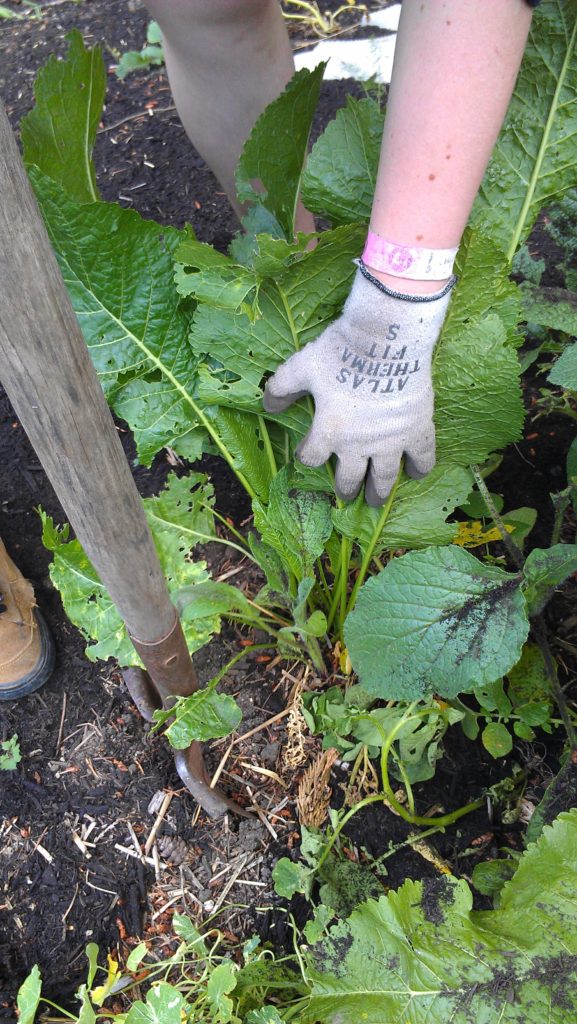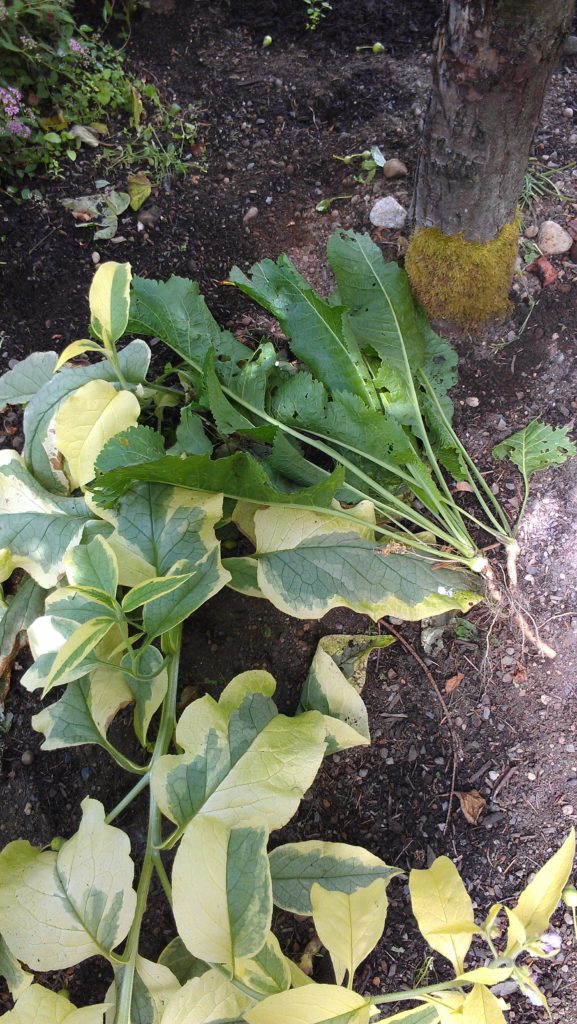18 Jul Growing Horseradish: A Ruben aficionado’s must have
Horseradish: an interesting herbaceous plant, with a pungent, mustard like root usually enjoyed as a condiment for a nice piece of steak or a hot Ruben sandwich. Some Ruben aficionados would even consider it a necessity to have a proper sandwich. Which can be quite troubling when there is none in the house. But this is not a problem for someone with a supply of bushy green horseradish growing in the garden. In fact even the young leafs are edible, making a spicy addition to a green salad or blanched as spinach substitute.
But growing these plants in the garden can have additional benefits beyond getting a kick of flavor on the dinner plate. Horseradish is known to be an aromatic confuser, or member of a group of plants whose strong smells disorient harmful bugs. Having one horseradish plant at each corner of a potato bed is enough to deter a number of potentially harmful bugs. Horseradish also produces essential oils that are known to have antibacterial and anti-fungal properties. Indeed it was used in 1500s England only for its medicinal qualities. It can help prevent fungal infection in fruit trees like brown rot on apples and potato diseases. By planting a nice full ring around a fruit tree will have these effects in addition to excluding weeds from the area.
Horseradish is a quite a hardy plant and requires little maintenance other than harvesting the roots. It can survive poor conditions including low nutrient soils and enjoys wetter soils where other plants won’t grow. It does grow best in full sun but can grow in dappled sunlight provided by an open forest canopy.
Growing horseradish in your garden can be a fun and provide benefits to your garden plants while providing some good flavors for your meals.




